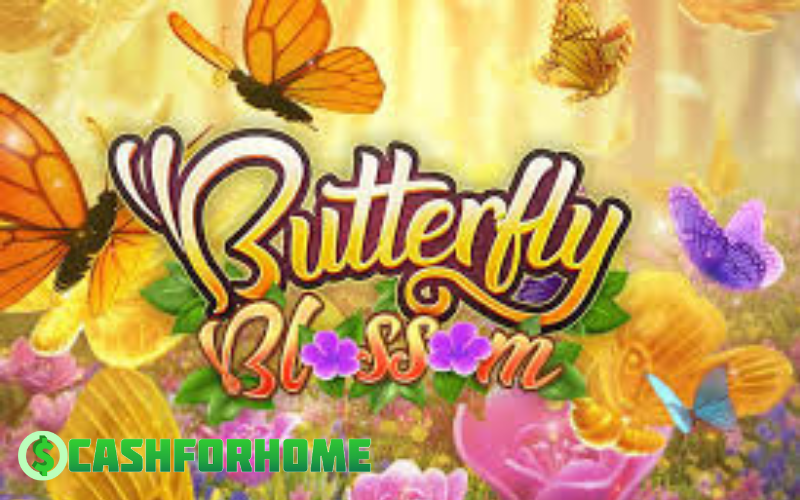The enchanting world of butterfly blossoms holds secrets waiting to be unlocked. Dive into this complete guide to discover the beauty and significance of these delicate creatures in nature.
Butterflies, with their vibrant colors and graceful movements, captivate our hearts and minds. Understanding the phenomenon of butterfly blossoms is key to appreciating their role in the ecosystem and our lives.
In this guide, you can expect to learn about the life cycle of butterflies, their unique behaviors, and how you can create a butterfly-friendly environment in your own backyard. Join us on this journey of discovery and exploration as we unravel the mysteries of Butterfly Blossom.

THE ANATOMY OF A BUTTERFLY BLOSSOM
Butterfly blossoms are not just your average flowers. Their unique structure and features play a crucial role in attracting butterflies for pollination, forming a beautiful and intricate relationship between the two.
The petals of a butterfly blossom come in a variety of shapes and sizes, each serving a specific purpose in luring butterflies. Some blossoms have long tubular petals designed to accommodate the extended proboscis of butterflies, allowing them to access nectar easily. Others may have flat, open petals that provide a landing pad for butterflies as they collect pollen. These diverse shapes are like welcoming signs tailored to attract different butterfly species, ensuring successful pollination.
COLOR PATTERNS AND PIGMENTS
Color plays a significant role in the world of butterfly blossoms. Bright and vibrant colors such as reds, purples, and oranges act as beacons for butterflies, guiding them towards a bountiful source of nectar. Each color has its unique meaning in the butterfly world, with some signaling high nectar content or specific nutrients. The pigments responsible for these hues are like nature’s art supplies, creating a visual feast that not only attracts butterflies but also adds to the overall beauty of the garden. The evolution of these colors and pigments highlights the intricate dance between butterflies and flowers, showcasing nature’s ingenious way of ensuring mutual benefit.
In the enchanting realm of butterfly blossoms, every petal, color, and pigment tells a story of coexistence and harmony between two seemingly distinct worlds.
BUTTERFLY ATTRACTION MECHANISMS
Have you ever wondered about the mesmerizing dance between butterflies and blooming flowers? Let’s delve into the enchanting world of butterfly attraction mechanisms and uncover the secrets behind their intricate relationship.
Picture this: a gentle breeze carries the sweet fragrance of flowers across a sun-kissed meadow. Butterflies, with their keen olfactory senses, are drawn to this alluring scent like a magnet. The nectar hidden within the delicate petals serves as a delectable treat for these fluttering creatures. This sugary liquid, rich in sugars and amino acids, acts as a vital energy source for butterflies, fueling their graceful flights. Nectar not only satiates their hunger but also provides essential nutrients crucial for their survival. It’s nature’s way of fostering a mutually beneficial bond between butterflies and butterfly blossoms.
UV PATTERNS AND GUIDES
Imagine strolling through a garden where vibrant blossoms boast intricate ultraviolet patterns invisible to the human eye. These patterns act as nature’s GPS, guiding butterflies towards the abundant nectar hidden within the flower’s depths. For butterflies, these ultraviolet markings are like neon signs, signaling the presence of a fulfilling meal. The communication between butterflies and flowers transcends spoken language, relying instead on the silent dialogue of UV signals. It’s a fascinating symbiotic dance where butterflies benefit from nectar-rich bounty, while flowers ensure their pollen is carried far and wide, facilitating cross-pollination.
Unlocking the secrets of butterfly attraction mechanisms reveals the intricate strategies employed by nature to ensure the continuity of life. By understanding these captivating mechanisms, we gain a deeper appreciation for the delicate balance that sustains our natural world.
ADAPTATIONS FOR BUTTERFLY POLLINATION
Butterfly blossoms have evolved unique adaptations that facilitate successful pollination by butterflies, showcasing a beautiful symbiotic relationship between the plants and these graceful insects.
LANDING PLATFORMS AND ACCESSIBILITY
Landing platforms play a crucial role in butterfly pollination by providing a stable landing spot for butterflies as they delicately navigate the blossom. These platforms offer a safe and secure surface for the butterflies to rest on while they collect nectar. Over time, these structures have evolved to be strategically positioned to attract butterflies, ensuring easy access to the nectar-rich rewards. The evolution of landing platforms demonstrates how plants have adapted to cater to the specific needs of their pollinators, enhancing the efficiency of the pollination process.
LONG TUBULAR COROLLAS
Long tubular corollas found in certain butterfly blossoms serve a remarkable function in attracting butterflies for pollination. These elongated structures have co-evolved with butterflies, creating a mutually beneficial relationship. The intricate design of long tubular corollas makes it easier for butterflies to reach the nectar hidden within, while simultaneously ensuring that the insects come into contact with the flower’s reproductive organs, aiding in the transfer of pollen. This co-evolution highlights the remarkable adaptability of plants and butterflies, resulting in a harmonious partnership that benefits both parties.
By developing specialized landing platforms and intricate long tubular corollas, butterfly blossoms have honed their adaptations to not only attract butterflies but also to efficiently facilitate the pollination process. These unique features showcase the intricate dance of evolution and highlight the remarkable ways in which plants and butterflies have coevolved for mutual benefit.
CONCLUSION
In conclusion, exploring the secrets of butterfly blossoms has unveiled a world of wonder and significance in butterfly ecology. Understanding the intricate relationship between butterflies and their blossoms is key to appreciating the delicate balance of nature. By protecting these natural wonders, we not only preserve the beauty of our environment but also safeguard the crucial role they play in sustaining butterfly populations. Embrace the enchanting allure of butterfly blossoms and join the mission to cherish and conserve these vital components of our ecosystem. Together, let’s nurture and safeguard these delicate treasures for generations to come.







